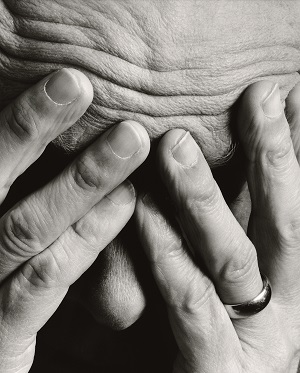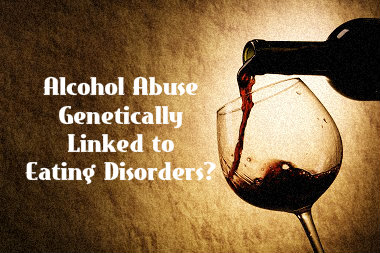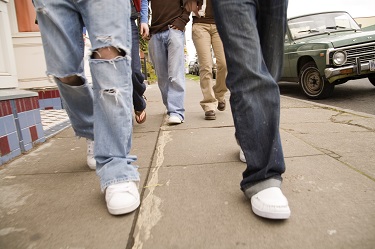Adolescence is a time of change and self-discovery. For some teens this change involves experimentation with substances, or perhaps even the development of alcohol or drug addiction. That seems to be particularly true for lesbian, gay, bisexual, and transgender (LGBT) teens, a group that shows alarming rates of substance abuse and addiction. If you’re a parent or caregiver, keep reading to learn more about why LGBT teenagers have higher rates of substance abuse and what you can do to help.
LGBT Teen Addiction Statistics
 Research consistently shows that lesbian, gay, bisexual, and transgender teens abuse substances at higher rates than their heterosexual peers. Overall, the odds of abusing substances are 190% higher for LGBT teens than for teens that are heterosexual. However, alcohol and drug use rates are even higher in specific LGBT populations. Bisexual youth have substance abuse rates that are 340% higher than heterosexuals, while females have rates that are 400% higher [1].
Research consistently shows that lesbian, gay, bisexual, and transgender teens abuse substances at higher rates than their heterosexual peers. Overall, the odds of abusing substances are 190% higher for LGBT teens than for teens that are heterosexual. However, alcohol and drug use rates are even higher in specific LGBT populations. Bisexual youth have substance abuse rates that are 340% higher than heterosexuals, while females have rates that are 400% higher [1].
This doesn’t mean that every non-heterosexual teen will become addicted. In fact, research suggests some of the lowest levels of substance abuse are found among students, regardless of sexual orientation, who do not experience homophobic teasing and feel they are in a positive school environment [2].
The Link Between LGBT Teens And Addiction
Identifying as a non-heterosexual person does not in itself lead to alcohol or drug addiction. However, LGBT youth may be forced to deal with unique challenges; it’s these challenges that can raise their risk of addiction significantly.
For instance, lesbian, gay, bisexual, and transgender teenagers are at higher risk for bullying from their peers. Whether the bullying behavior involves being pushed around in a hallway or being victimized on Facebook, it can isolate an adolescent and lead to feelings of depression, which is a risk factor for substance abuse. One study found that teens bullied because they were perceived as gay were more likely to be depressed than those bullied for other reasons or not at all [3].
The threat of violence against LGBT people might also drive a teen to make unhealthy choices that include alcohol or drug abuse. About 21% of all hate crimes in 2011 were based on the victim’s sexual orientation, according to the FBI. Of those, 60% were attacks specifically against gay men and 11% targeted lesbians [4]. Adolescents who feel threatened may also feel the need to self-medicate their severe stress and anxiety with alcohol or drugs.
Parental rejection may also contribute to an LGBT teen’s alcohol or drug addiction. For example, young adults who were rejected by parents for their sexuality during adolescence were almost 4 times more likely to use illicit drugs than those who didn’t experience rejection [5].
Community factors can play a role as well. A study of non-heterosexual adults found that those who lived in states that banned same-sex marriage had a 42% increase in alcohol use disorders [6]. While this particular study examined adults, it’s possible that living in an environment that actively rejects an LGBT teenager’s identity can spur substance abuse.
How To Help LGBT Teens
As a parent or caregiver, it’s essential to help a teenager struggling with substance abuse. Excessive use of alcohol or the abuse of prescription or illicit drugs lays the foundation for a life that’s spent dealing with an addiction rather than living up to potential. Addiction is a chronic mental health condition, although with treatment it can be managed and even overcome. Finding help now gives your teen an opportunity to get back onto a healthier path before an accident or overdose makes it too late.
Seek professional help. Alcohol and drug abuse should be treated by qualified professionals. If possible, choose a recovery facility skilled in working with LGBT youth. These centers will have expertise in helping a lesbian, gay, bisexual, or transgender addict deal with situation-specific emotions and behaviors that play a role in his or her addiction. For example, a rehab center with an LGBT program will work with your teen on matters dealing with sexuality, sexual identity, gender identity, and family dynamics.
If you cannot locate alcohol or drug addiction treatment specifically for an LGBT addict, don’t give up hope. A qualified addiction center can still treat your teen for substance abuse. You’ll work with a specialist to develop a treatment plan that addresses your teenager’s needs. Depending on the substance, he or she may need detoxification (detox) as well as therapy. Since teenagers are heavily influenced by their peers, it’s normal for addicted teens to require residential rehab so they can fully immerse themselves in a safe, substance-free environment.
Substance abuse aftercare is also a critical part of maintaining sobriety in adolescents. Addiction aftercare, which will likely include therapy, ensures that a teen addict continues to have access to the tools that help him or her stay in recovery. In addition, LGBT teens are particularly vulnerable to bullying and, in some cases, violent attacks because of their sexual identity. An aftercare program will help a teenager cope with those challenges in a healthy way.
Create a supportive home. Researchers have found that parental rejection during an LGBT teen’s adolescence boosts the risk of substance abuse. Consider how you or other caregivers have reacted to your teenager’s identification as non-heterosexual. If you or a spouse has reacted with disappointment or anger, or if you’ve rejected the teen outright, start educating yourself in order to better understand your own feelings. Support groups for LGBT parents can be an ideal resource for those struggling to accept a non-heterosexual teenager. You’ll find beneficial support from parents who have experienced the same emotions and challenges.
Encourage your teen to connect. Support from others in the LGBT community will nurture your teenager in a positive way. Building friendships with those who are going through the same life experiences will help him or her feel less isolated. Be sure, however, that these connections are the kinds that encourage sobriety and a healthy lifestyle.
Alcohol and drug addiction can ruin the life of your teen. Don’t wait to get help. Reach out to treatment professionals who are experienced in working with LGBT . Doing so will give your son or daughter the best chance to have an addiction-free life.
References:
[1] http://www.ncbi.nlm.nih.gov/pmc/articles/PMC2680081/
[2] http://www.cdc.gov/lgbthealth/youth.htm
[3] http://library.wheelerclinic.org/poc/view_doc.php?type=news&id=155391&cn=5
[4] http://www.fbi.gov/about-us/cjis/ucr/hate-crime/2011/narratives/incidents-and-offenses
[5] http://pediatrics.aappublications.org/content/123/1/346.abstract
[6] http://ajph.aphapublications.org/doi/abs/10.2105/AJPH.2009.168815
Marijuana is a plant-based drug known for its potential to produce physical/mental dependence and other significant health issues when used repeatedly over extended periods of time. Generally speaking, health risks associated with marijuana use are linked to such factors as consumption level and the potency of any given batch of the drug. In a study published in October 2013 in the journal Addiction, a multi-institution Dutch research team sought to determine whether young adult users can accurately gauge their level of marijuana consumption or the potency of the marijuana they smoke or ingest. These researchers concluded that young adults generally do a poor job of accurately tracking their marijuana usage.
Effects And Health Consequences Of Marijuana
![]() Marijuana is the most readily available form of a plant-based drug called cannabis, which has a chief active ingredient called THC (tetrahydrocannabinol). When THC molecules enter the bloodstream, they attach themselves to nerve cells inside the brain and trigger a form of mind alteration classically associated with effects such as heightened pleasure levels, reduced body coordination and substantial changes in normal thought and perception. In controlled circumstances, marijuana use is now legal in certain jurisdictions across the U.S. However, most states still consider marijuana use illegal, and federal statutes also prohibit use of the drug.
Marijuana is the most readily available form of a plant-based drug called cannabis, which has a chief active ingredient called THC (tetrahydrocannabinol). When THC molecules enter the bloodstream, they attach themselves to nerve cells inside the brain and trigger a form of mind alteration classically associated with effects such as heightened pleasure levels, reduced body coordination and substantial changes in normal thought and perception. In controlled circumstances, marijuana use is now legal in certain jurisdictions across the U.S. However, most states still consider marijuana use illegal, and federal statutes also prohibit use of the drug.
According to the National Institute on Drug Abuse, marijuana use is associated with mental and physical health risks that include learning and memory deficits during adolescence, lowered IQ scores during adulthood, temporary heart rate increases, heartbeat irregularities, impaired judgment and decision-making, impaired memory functions, a reduced ability to control body movements, the same types of lung-related ailments that commonly affect cigarette smokers and temporary bouts of psychosis (a mental health term for hallucinations and/or delusional thinking). In addition, habitual smokers of the drug have heightened risks for developing longer-term forms of psychosis that persist over time.
Marijuana Addiction Risks
Marijuana has a relatively benign reputation when compared to other powerful, illicit or illegal substances such as amphetamine/methamphetamine, cocaine or opioid narcotics. Despite this reputation, current scientific evidence indicates that all habitual marijuana users run a considerable risk of becoming physically dependent on the drug and subsequently developing the drug-oriented personal and social behaviors classically associated with the presence of addiction. Roughly 17 percent of individuals who start marijuana use before reaching adulthood become addicted, while anywhere from one-quarter to one-half of all everyday users develop an addiction. Part of the addiction risk associated with the drug stems from a rise in marijuana potency over the last several decades. While some sources report a 3,000 percent increase in the drug’s potency in that timespan, more reliable estimates place the increase in strength at anywhere from 200 percent to 600 percent.
Marijuana Smoker’s Estimates Of Usage
In the study published in Addiction, researchers from three Dutch institutions sought to determine how accurately habitual marijuana users can track their intake of the drug. To a certain extent, accurate tracking could potentially reduce the risks for the onset of addiction by allowing users to gauge their level of involvement in drug use and curb that level when necessary. The researchers made the first part of their assessment by asking 106 young adults to estimate their level of marijuana use, as well as their level of intoxication and the relative potency of the marijuana they consumed. Next, the researchers compared the participants’ estimates to objectively verifiable measurements of these same factors.
The authors of the study found that, by objective measurement, the amount of marijuana used by an individual in any given situation varies considerably, as does the potency of any given marijuana batch. However, they also concluded, marijuana users typically do a bad to mediocre job tracking these changes in potency and amount. As a result, marijuana users tend to have only a partially reliable ability to understand and monitor their true level of marijuana use.
Significance And Conclusions Of Marijuana-Use Study
The authors of the study in Addiction did not specifically associate a limited ability to track marijuana usage with increased risks for physical dependence and addiction. However, by logical inference, people who don’t know how much marijuana they use or how strongly that marijuana affects them may fail to notice key physical and mental changes that signal the onset of dependence- and addiction-related problems. Subsequently, they may fail to take critical steps necessary to prevent the onset of dependence or addiction. The study’s authors note that young adult marijuana users don’t entirely fail to track their marijuana intake; instead, they simply track their intake too poorly to make reliable estimates.
09 Oct 2013
Baby Boomers And Addiction – Part 2
Continued from Baby Boomers and Addiction – Part 1
There may be nothing specific to baby boomers that puts them at a higher risk of addiction, but their numbers will challenge the system. In order to adequately meet the need, new treatment approaches are being developed. The New York Times articles “Advice on Addiction in Boomers” Part 1 and Part 2, answer readers’ questions on the issue of addiction in this demographic.
Dangers Of Senior-Related Addiction
People in this age group will experience the greatest risk for alcohol-related health conditions such as heart disease, kidney failure, and liver disease. They also face the risk of falls and alcohol-related injuries that are made more severe by age.
Boomer-Based Approaches To Treatment
 While people are people and addicts are addicts, the Baby Boomers have always been, to some degree, their own animal. This has inspired new approaches to treatment and recovery designed to take characteristics of this population into consideration in developing more effective approaches.
While people are people and addicts are addicts, the Baby Boomers have always been, to some degree, their own animal. This has inspired new approaches to treatment and recovery designed to take characteristics of this population into consideration in developing more effective approaches.
Dollars and energy naturally go to preventing drinking and educating about alcohol related dangers in the teenage and college population, but statistically, they are not the problem. Older adults often fly under the radar with their problem alcohol use. They assume, by virtue of being adults, that they have their drinking under control. They drink more covertly, it is accepted in their social circles or they isolate and are harder to keep track of.
The question naturally arises: what is the likelihood of recovery for individuals in this demographic? Is it possible to reform after so many years of consistent heavy use or abuse? Is it possible to ‘teach an old dog new tricks?’
According To Dr. Krantz:
“The longer an individual uses a substance, the more changes there are to the chemistry and the neuro-pathways in the brain. The brain essentially becomes re-wired as a result of substance use. In recovery, with abstinence, those pathways can begin to heal, regardless of how long a person has been addicted. Despite the healing of the brain, the disease is forever imprinted, which is why recovery needs to be a lifelong process.”
Concerns Of Adult Children
Boomer alcoholics are raising levels of concern among their adult children—those old enough to recognize a drinking problem and motivated to help their parents find recovery.
Often it is the adult children of substance abusers who are questioning and confronting the disturbing habits and seeking out treatment information for their parents. Thus information and support directed at children on how to help or deal their addict parents will also be needed in coming years.
Societal Impact Of Treating Aging Addicts
The primary concern is increased health care costs as a result of the need to treat a large group of addicts with expensive residential recovery programs. While the past years have seen a decrease in binge drinking and alcoholic patterns in younger generations such as the Millennials, there has been a marked rise in the boomer-aged adults that have been admitted to the hospital for binge drinking, or who have needed medical treatment for drinking related conditions and injuries. Alcoholism also has the potential to exacerbate other pre-existing health conditions thus requiring a higher level of medical care and prescription drug use.
What Can Adult Children Do To Help Addicted Seniors?
Adult children can begin by becoming aware of what constitutes alcohol abuse. According to the piece in The New York Times:
“Several readers asked how to determine if a loved one has an issue with alcohol. The Centers for Disease Control and Prevention defines heavy drinking, or alcohol abuse, as ‘a pattern of drinking that results in harm to one’s health, interpersonal relationships or ability to work.’ Alcohol dependence, also known as alcohol addiction or alcoholism, is a chronic disease with symptoms including ‘continued use despite repeated physical, psychological or interpersonal problems.’
Some other important questions to ask are: Why is he drinking? Is it a coping mechanism? Is it about more than just liking the taste of alcohol? Is he drinking to relax? Is he drinking more than intended? Can he stop at any time and stay stopped?”
Warning Signs Of Substance Abuse
The article provided a general list of red flags to look for when questioning one’s own drinking problem or that of another.
These are some signs and symptoms that often manifest in boomers suffering from substance abuse or addiction issues:
- Drinking begins to interfere with relationships
- Decision making becomes more difficult
- Dementia or falling are more prevalent
- Increased tolerance
- More health complaints
- Chronic pain (it is important to seek treatment somewhere that specifically addresses this issue)
- Mood swings and emotional distancing
- Behavior that is out of the ordinary (for example, someone who plays golf all the time has progressive isolation and begins to give it up)**
If an addict is committed to practicing an addiction and refuses to seek help, there is often little that spouses, children, and/or grandchildren can do to make recovery a reality. However, all attempts and possible solutions should be exhausted. The coming years promise to bring new pathways and solutions in treatment and recovery with the aim of providing hope to baby boomers who suffer from addiction.
**Credit: List taken from The New York Times article “Addiction in Boomers.”
08 Oct 2013
Baby Boomers And Addiction – Part 1
As our nation’s largest generational group reaches retirement, new concerns spring up around the mounting rates of addiction in this large and aging demographic. The baby boomer generation, by dint of sheer numbers, has long influenced the trends and direction of the U.S. in almost all areas of life. Though young people may have the corner on the cutting edge, it is the people born post World War II between 1946 and 1964 that either respond or don’t respond to the prevailing culture. How are the patterns and needs of baby boomers in addiction and recovery shaping the field of treatment and rehab? How do we handle addiction in an aging population? What special approaches should be taken?
Spare Time – Anxiety, Depression And Alcoholism
 As baby boomers progress in the life cycle, professionals are seeing them forge wide paths into the realm of substance abuse, primarily alcoholism. As this population ages and retires, they face obstacles not nearly so prevalent in their parents’ generation. Many, for example, will live many years beyond retirement—how will these years be spent? Many have poured themselves into careers with workaholic ardor—now what shall be done with the spare time? Rates of anxiety and depression have also skyrocketed among boomers, making them a fertile breeding ground for substance and process addictions.
As baby boomers progress in the life cycle, professionals are seeing them forge wide paths into the realm of substance abuse, primarily alcoholism. As this population ages and retires, they face obstacles not nearly so prevalent in their parents’ generation. Many, for example, will live many years beyond retirement—how will these years be spent? Many have poured themselves into careers with workaholic ardor—now what shall be done with the spare time? Rates of anxiety and depression have also skyrocketed among boomers, making them a fertile breeding ground for substance and process addictions.
And now the challenge faces medical and mental health professionals: How to meet the mental health and addiction treatment needs of the aging baby boomers? What trends will arise and what challenges will manifest?
Recently, The New York Times addressed the issue in its health section through a two-part Q&A with Dr. Barbara Krantz, medical director of an addiction treatment center in Florida. “Advice on Addiction in Boomers,” Part 1 and Part 2, were responses to questions from individuals concerned about their own drinking patterns or those of a partner, as well as adult children unsure of how to handle parental alcoholism. Krantz describes some of the unique needs, challenges and solutions surrounding the issue of addiction in the baby boomer population.
Unique Patterns And Needs In Baby Boomers
While the fundamental recovery principles are essentially universal and change little from person to person or generation to generation, professionals in addiction and recovery recognized that boomer addicts could benefit from a treatment plan that was more holistic in its approach—one that aimed to speak to them and their unique perspective, cultural mindset, and experiences.
Dr. Krantz details the rationale behind the development of a treatment approach geared specifically to baby boomers:
“We created a specific program for baby boomers because their socialization and culture created unique issues that need to be addressed. Many boomers grew up at a time when there was a cultural acceptance of drugs and alcohol. It was a time when authority was questioned and knowledge was sought. Woodstock, the Vietnam War and other important generational elements are critical to note in treating them. It’s also important to approach boomers on an intellectual level. They need to fully understand why we approach treatment the way we do, because they search for knowledge and understanding rather than passively accepting authority.”
Addictions Beginning Later In Life
While many boomers perhaps never manifested addictions in mid life, the retirement years often present a fertile breeding ground for the development of an addiction or the exacerbation and escalation of what might have been previously termed “heavy drinking.” New stresses arise at this age. Marital problems come to the forefront when the children have finally left the nest. There are economic strains resulting from a depressed economy, late in life job loss, uncertainty about Social Security and how long retirement funds will last, hormonal changes, the illness or loss of a spouse, scattered social connections leading to isolation and loneliness, the unstructured schedule of retirement life, and the perceived loss of one’s sense of purpose. The rise of depression and anxiety is also a factor. Significant numbers of baby boomers are taking prescription drugs in an attempt to manage one or both of these conditions.
Untreated mental illnesses as well as the life conditions listed above have frequently led boomers to turn to a substance or process addiction for “support.” Certainly, as a demographic, they are not unique in this—people have been turning to alcohol to deal with the stresses and tragedies of life for centuries. But because of the greater size of this age group, treatment professionals face greater numbers of incoming patients.
The legalization of marijuana in many states has led to increased availability and experimentation. While many individuals with chronic pain related to a serious injury or illness attest to its medicinal uses, there are still concerns about the recreational use of the drug.
Research has shown marijuana to be a “gateway drug” because experimentation and recreational use can give a user access to more dangerous drugs that carry a higher likelihood of addiction and more serious side effects.
Marijuana Users Experiencing Psychosis Even After Use
Another important concern related to marijuana is research connecting its use to ongoing psychotic episodes. Some studies have shown that users can experience psychosis, not only while under the immediate effects of the drug but for extended period following use.
When teens begin using marijuana, however, the risks may multiply. Teen brains are still developing and any substance use can interrupt the important processes occurring in the structures of the brain, causing long-term cognitive impairment.
 A study led by Willemijn A. Van Gastel of the Rudolf Magnus Institute of Neuroscience at the University Medical Centre Utrecht in the Netherlands examined the effect of marijuana on mental health. While many studies have documented the connection between psychological problems and marijuana use, it is unclear whether cannabis use leads to an increased risk of mental disorders or if those with mental health problems are more likely to use cannabis.
A study led by Willemijn A. Van Gastel of the Rudolf Magnus Institute of Neuroscience at the University Medical Centre Utrecht in the Netherlands examined the effect of marijuana on mental health. While many studies have documented the connection between psychological problems and marijuana use, it is unclear whether cannabis use leads to an increased risk of mental disorders or if those with mental health problems are more likely to use cannabis.
The findings were published in Psychological Medicine.
The study analyzed surveys administered to over 10,000 students aged 11 to 16. The questions on the survey requested information about substance use, including cannabis, alcohol and cigarettes.
The students were also asked about other aspects of life, including whether they had experienced any problems at school or if there was any conflict at home. They were also asked about whether there was any history of molestation and other environmental risk factors for mental health symptoms.
Multiple Problems In School And Behavior Associated With Marijuana Use
The results of the analysis showed that there was an association between marijuana use and psychosocial problems. When other risk factors were taken into account, however, the association was not as strong. In addition, there were risk factors that were associated with negative psychosocial outcomes that were also associated with increased levels of marijuana use, including behavioral problems at school, missing school due to illness, truancy and alcohol and cigarette use.
The authors of the study believe that the presence of substance use, low self-esteem and difficulties with mood disorder symptoms could lead to psychosocial problems and marijuana use.
The researchers were surprised to find that there was no evidence of a relationship between the level of marijuana use and the level of poor outcomes in psychosocial measures. This suggests that the risk factors are a critical component in determining whether marijuana use leads to other negative outcomes.
Can Marijuana Use Indicate If A Teen Might Be At Risk For Mental Health Problems?
The authors note that the findings can be understood as a way to predict future negative behavioral and overall psychological and psychosocial wellbeing. In other words, marijuana use can indicate whether a teen might be at risk for mental health problems.
Drug Prevention And Education To Reduce Risk Of Substance Abuse
The findings are helpful for targeting teens that may be in need of prevention and education efforts to improve mental health and reduce the risk of additional substance use. Screening teens for substance use may also help identify possible areas of high risk for mental disorders.
While marijuana is often considered a harmless substance when used in moderation, many of the effects of the drug are not fully explored. Parents are encouraged to talk openly and often with their teens about the risks associated with marijuana use, including the possibility of mental disorders.
A study has concluded that for some having an eating disorder could also mean an increased risk for alcohol abuse. The reverse is also true, that certain people with alcohol dependency may face higher chances of developing certain kinds of eating disorders.
 For their study, researchers at the Washington University Medical School in St. Louis took a look at close to 6,000 fraternal and identical twins over age 18. Mental health practitioners and other experts have been aware for some time of a comorbidity between alcohol abuse and eating disorders in women, but this new study indicates that the link holds true for some men as well. The research has tended to focus on women since they’re most often the victims of disordered eating, but men suffer these illnesses as well, including binge eating.
For their study, researchers at the Washington University Medical School in St. Louis took a look at close to 6,000 fraternal and identical twins over age 18. Mental health practitioners and other experts have been aware for some time of a comorbidity between alcohol abuse and eating disorders in women, but this new study indicates that the link holds true for some men as well. The research has tended to focus on women since they’re most often the victims of disordered eating, but men suffer these illnesses as well, including binge eating.
Binge Eating
Binge eating occurs when a person consumes an overabundance of food in a single sitting. This overeating is often done in secret and is followed by feelings of guilt, shame and being out of control. It’s frequently accompanied by purging wherein the person compensates for the large food intake by either causing themselves to vomit or misuse laxatives or diuretics. Experts refer to behaviors like purging as compensatory behaviors. The researchers did not ask men about purging behaviors such as diuretic and laxative abuse, but instead relied upon data from prior male studies. They did ask the women in the study about any potential purging behaviors. Compensatory behaviors like purging are considered closely connected to alcohol abuse behaviors.
Similarities
Following the interviews, statistical methods were employed to calculate estimates for both the influence of environment and the influence of genes. Both eating disorders and alcohol dependency are thought to be a result of a mix of environmental and genetic causes. The statistical method carefully separated the two in order to gauge genetic impact alone. What they found was that the same genes were implicated in both alcohol dependency and binge eating disorders.
Around six percent of the females in the study had problems with alcohol dependency at one time or another during their life. Thirteen percent of them also struggled with binge eating and 14 percent of them also engaged in purging behaviors. More men (25 percent) reported alcohol dependency at some point and 11 percent of them had also engaged in binge eating.
This means that there was a .26 overall statistical correlation between binge eating and alcohol dependency (zero equals no genes in common and one equals every gene in common). For women the correlation was .32. The study team concluded that some of the very same genes which affect alcohol dependency also impact binge eating for both men and women along with compensatory behaviors (purging) in women.
Treatment
There is increased awareness of eating disorders in today’s culture, but diagnoses of anorexia nervosa and bulimia nervosa (a binge and purge eating disorder) continue to be relatively infrequent. When men or women are diagnosed and admitted into treatment, there is rarely any examination into alcohol abuse issues as part of recovery therapy.
Likewise, when men or women enter into alcohol treatment, it is uncommon for staff to inquire or investigate any potential eating disorders. The Washington University study suggests that, given the genetic link between these two illnesses, recovery strategies should target both kinds of compensatory behavior.
The study is scheduled for publication in the September volume of the Journal of Studies on Alcohol and Drugs.
Prevention and early intervention are key elements in reducing the number of teens that use drugs. In order to identify and target teens for education and intervention, however, it is important to understand what factors make a teen likely to use.
There are differences, too, in various subgroups of the population that can influence which factors make drug use likely. Urban teens have different risk factors than rural teens, for instance, and black teens are likely to use drugs for different reasons than white teens.
Understanding Trends Are Critical
 It is critical to understand the trends that affect teens and that might impact whether they initiate drug use. Often, those teens that experiment with drugs go on to develop a drug addiction by the time they reach early adulthood. The transition to early adulthood is characterized with decisions that can impact career choice and even marriage and family, so it is critical that drug use be reduced in this population.
It is critical to understand the trends that affect teens and that might impact whether they initiate drug use. Often, those teens that experiment with drugs go on to develop a drug addiction by the time they reach early adulthood. The transition to early adulthood is characterized with decisions that can impact career choice and even marriage and family, so it is critical that drug use be reduced in this population.
Among Hispanic teens, experts have observed that the process in which an immigrant teen has adapted to his or her host country’s culture, or acculturation, is a predictor of drug use. However, while studies have shown a correlation between acculturation and drug use, the nature of the connection is not fully understood. A new study has shown the pathways that connect acculturation with teen drug use among Hispanics.
The researchers enrolled 1,040 Hispanic students from high schools in California. The students were recruited through a substance use prevention effort being used in the school.
Linguistic Connection
The researchers administered questionnaires at the beginning of the study, and then again at a one-year follow-up period. Included in the questionnaires were measures of several different factors. The students were asked about their linguistic acculturation, with questions that sought to establish, for instance, the primary language used by the student.
The students were also asked about their social self-control, with questions such as whether a student encountered difficulties in controlling what they said. They also asked students which drugs their close friends had used during the past thirty days.
In addition, the researchers asked the participants about their own substance use, including cigarettes, alcohol, marijuana and other drugs, both at baseline and at the follow-up period.
The researchers identified 846 of the participants as Hispanic based on their self-identification, and asked them to complete a follow-up questionnaire. Of those who completed the initial surveys, the retention rate was 81 percent.
The researchers were able to test a model that could predict a student’s current substance use based on earlier acculturation measures reported at baseline. The model focused on measures of social self-control, peer substance use and personal substance use. This was examined in light of the connection at follow-up between acculturation and substance use.
The researchers discovered that there are two main pathways from linguistic acculturation to the substance use patterns at the one year follow-up.
When students reported a higher level of linguistic acculturation at baseline, they were also more likely to have a lower level of social self-control. This was connected with a higher level of peer substance use, which was also associated with more substance use at the follow-up point.
Pathway to Substance Abuse
In a more direct route to substance use, those who reported a higher level of linguistic acculturation at the beginning of the study also reported more substance use at the follow-up, but this was through increased peer substance use alone.
The results of the study are potentially limited in several aspects. The questionnaires relied on self-reporting, which can result in inaccuracies due to the participant wanting to project a certain image. Also, while the researchers focused on linguistic acculturation, other measurements of acculturation could lead to significant variations in results.
The findings reflect a pathway to substance abuse that highlights a connection between linguistic acculturation and low social self-control and peer substance use. The findings may be helpful in helping target Hispanic teens that are likely to begin using substances based on a pathway of linguistic acculturation combined with low social self-control and peer substance use.
The loved ones of an individual addicted to a destructive substance such as methamphetamine or heroin often watch, perplexed, as the addict destroys their life for a substance that makes them miserable.
A new study may help explain why addicts keep going back to a substance that produces an unpleasant consequence. Researchers at the University of Michigan recently uncovered clues to the change in motivation that often occurs in drug users as they become addicted by testing similar behaviors in animal models.


